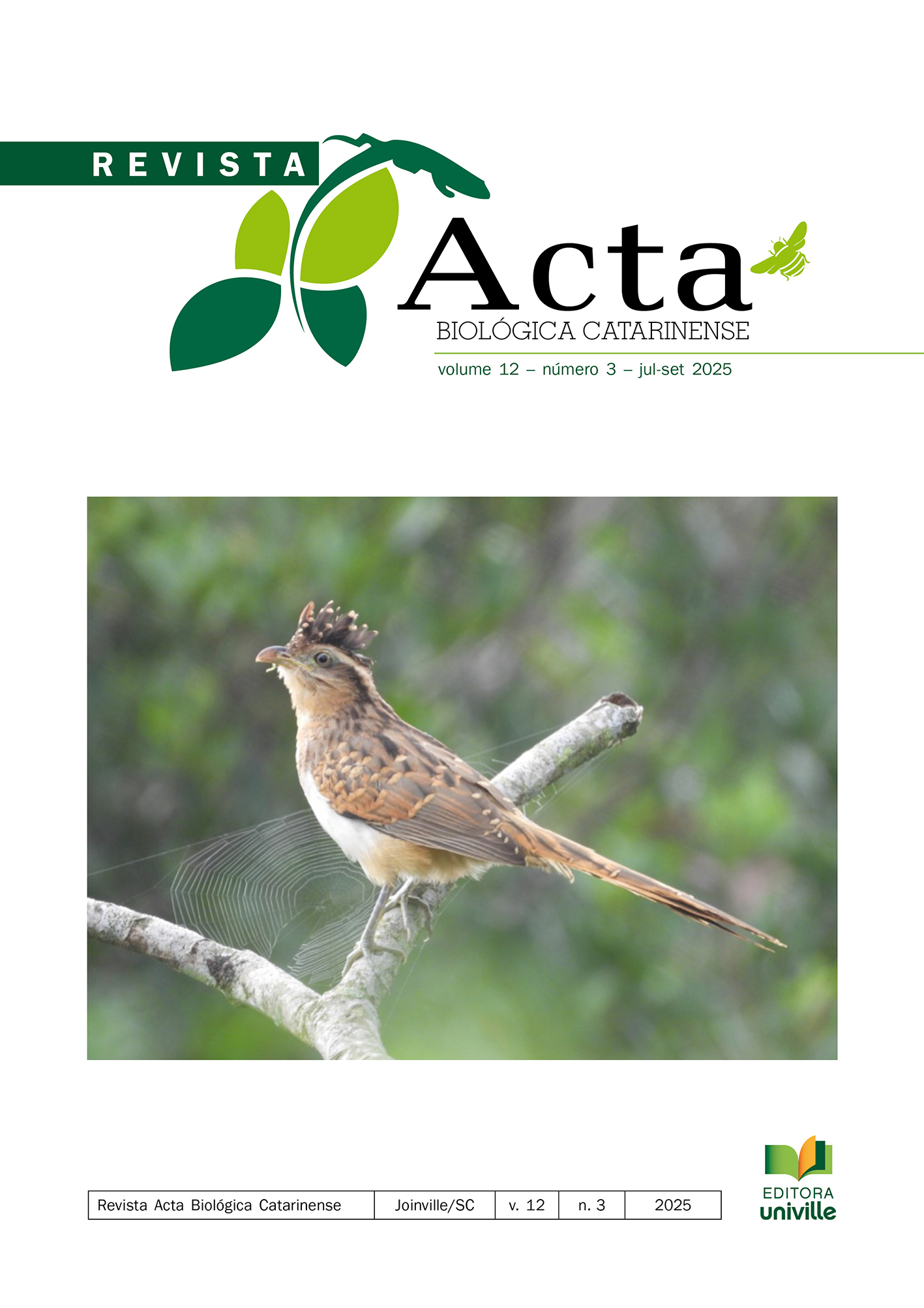Pollen morphology of succulent and fruiting plants
Morfologia polínica de plantas suculentas e frutíferas
DOI:
https://doi.org/10.21726/abc.v12i3.2848Resumo
Pollen grains represent crucial structures for the reproductive success of angiosperms, characterized by the presence of the intine (inner wall) and exine (outer wall), which are highly resistant for protection and maturation until pollen tube germination. These two walls contain the main morphological components used in pollen characterization. To contribute to palynological studies on succulent and ornamental species, the pollen morphology of the species Haworthia attenuata (Haw.) Haw. (Asphodelaceae), Echeveria agavoides Lem. (Crassulaceae), Eugenia brasiliensis Lam. (Myrtaceae), and Psidium guajava L. (white and red cultivars) (Myrtaceae) was analyzed. The plants were collected during field trips. Closed flower buds were removed, preserved, and acetolyzed. Slides were prepared and
examined under light microscopy and SEM.All species present pollen grains in monads. Haworthia attenuata has large, monocolpate, bilaterally symmetrical, heteropolar grains, elliptical shape, and foveolate exine. Echeveria agavoides has medium-sized, 3-colporate, radially symmetrical, isopolar grains, subprolate shape, subtriangular amb, and microverrucate/perforate exine.Eugenia brasiliensis has small, 3-colporate, radially symmetrical, isopolar grains, oblate shape, triangular ambit, and verrucate exine. Psidium guajava has small, 3-colporate, radially symmetrical, isopolar, angularly aperturate grains, oblate shape, subcircular ambit (white cultivar)/lobed (red cultivar), and microgranulated/ verrucate (white cultivar)/ granulated (red cultivar) exine.


